“Into the Ice”
8 December, 2022
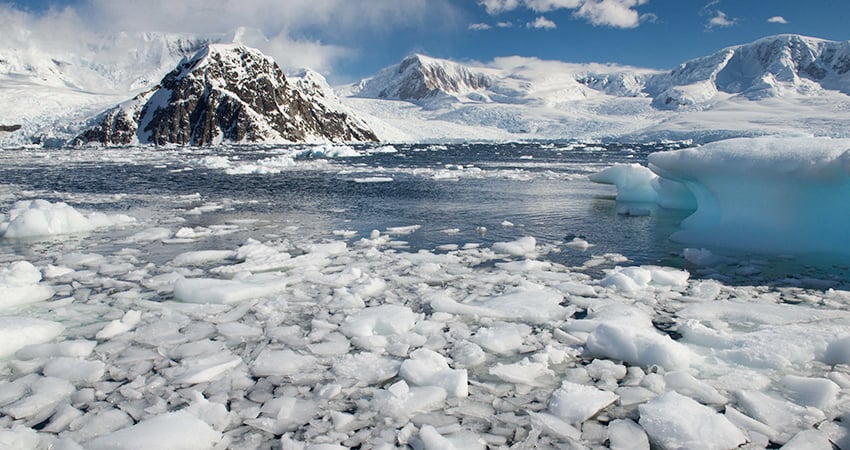
Hey, it’s a catchy title for anything ranging from a happy hour cocktail to a sprained ankle that needs relief, right? But for a polar expedition cruise operator like Poseidon Expeditions, it means something quite different.
By its very nature, traveling into the high latitudes – that’s above 60º north latitude in the Arctic or below 60º latitude in the Southern Ocean – means that you’ll be getting “into the ice,” even at the height of summer. And with good reason. It is in these chilly regions where summertime brings out a wide range of wildlife activity centered around courting, breeding and attending to the young.
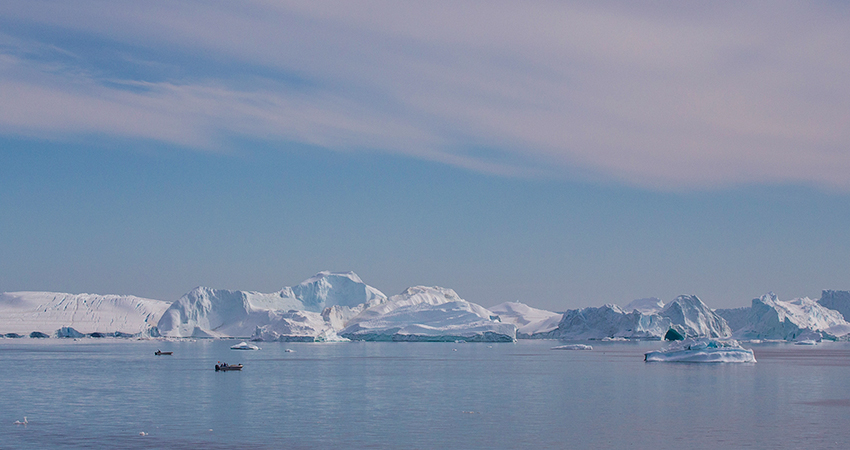
This is most obvious with birdlife, such as seen in the large penguin colonies of gentoos, chinstraps and Adélies at the Antarctic Peninsula. During much of the year, these penguins are living at sea. But they patiently wait for the ice to melt and subside along the rocky, craggy beaches of the Antarctic Peninsula, allowing them to come ashore and start the breeding cycle in late October and early November.
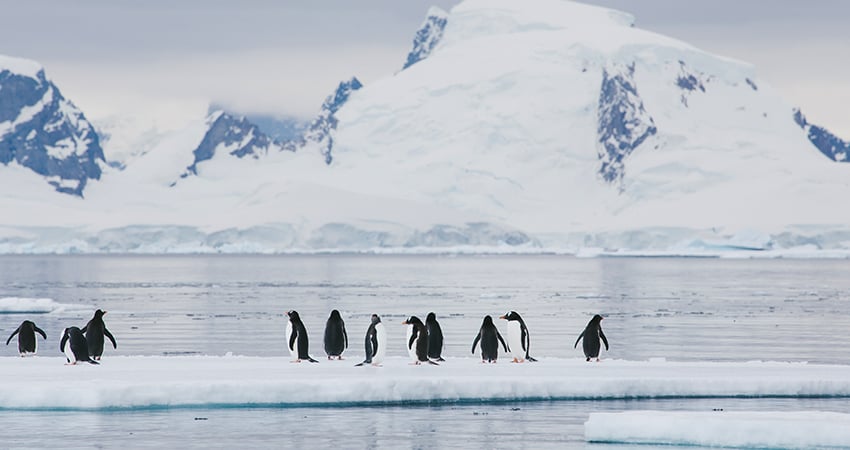
Up north, it is a different cast of characters, but equally dependent on the receding ice to make their breeding grounds, often on towering cliffs, desirable. In Svalbard alone, up to three million birds flock to this rocky archipelago north of Norway’s North Cape each May and June – Arctic terns, guillemots, kittiwake gulls, glaucous gulls, northern fulmars and puffins. The lure is the ecosystem created by the Gulf Stream, which brings warm, salty waters north and melts the ice surrounding Svalbard. This creating an explosion of plankton that in turn attracts whales and fish, which provide food for the birds and seals.
It’s also on the ice around Svalbard and Franz Josef Land – another annual destination for Poseidon’s 114-passenger Sea Spirit – that visitors will spot polar bears, the king species of the Arctic realm. After giving birth, female polar bears will raise their cubs on the ice, waiting patiently near airholes used by seals, the favored cuisine of Ursus maritimus. True, sometimes polar bears – or ice bears as they are often called in Europe – can be seen ashore, but this is usually a backup venue when they are on the hunt for nourishment.
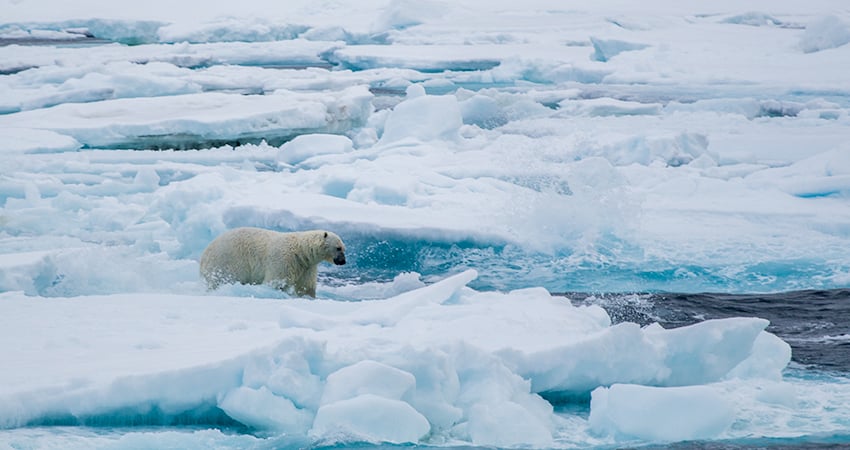
Much like a migrating bird, the Sea Spirit follows the sun and the warming currents, exploring the ice edge, getting “into the ice” to provide the best opportunities possible for its guests to see wildlife in its natural setting. In the Arctic, we design our schedule to take advantage of the annual ice melt, beginning in Svalbard in early June and moving northeast into Franz Josef Land later in July and August when this archipelago of 191 islands becomes relatively ice-free and allows better access for visitors.
In both the Arctic and Antarctica, passengers get the memorable opportunity to see all sorts of ice, up close and personal. We’re talking about icebergs of all sizes – some small enough to cruise by in close proximity, radiating with a wide spectrum of blue streaks and anyone’s guess as to how far a particular iceberg might extend below the surface of the water. For the more adventurous, paddling through brash ice can be even more exhilarating, as the “snap, crackle and pop” of air bubbles from thousands of years ago, trapped in glacial ice, are released into the air as the brash ice melts around your kayak.
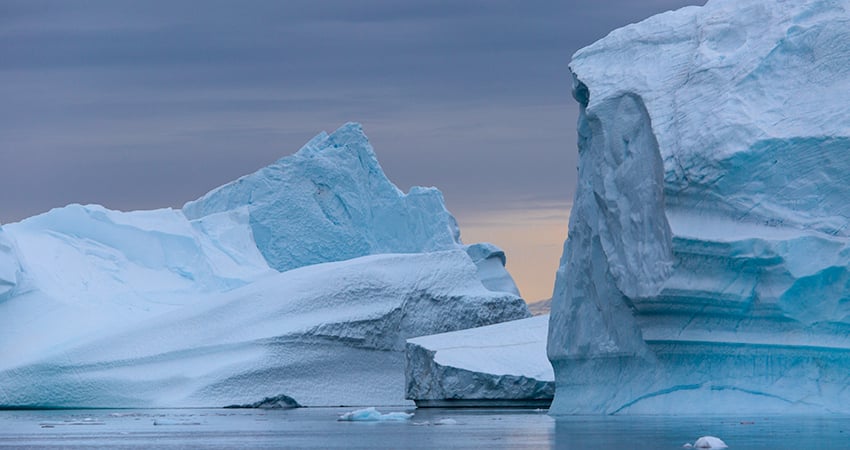
With both the Sea Spirit and its small fleet of kayaks and Zodiac landing craft, rest assured we stay a safe distance away from the large icebergs, whose movements can be unpredictable, as well as the faces or fronts of glaciers, which can calve and create substantial waves. Tremendously exciting, to be sure, but best experienced from a distance!
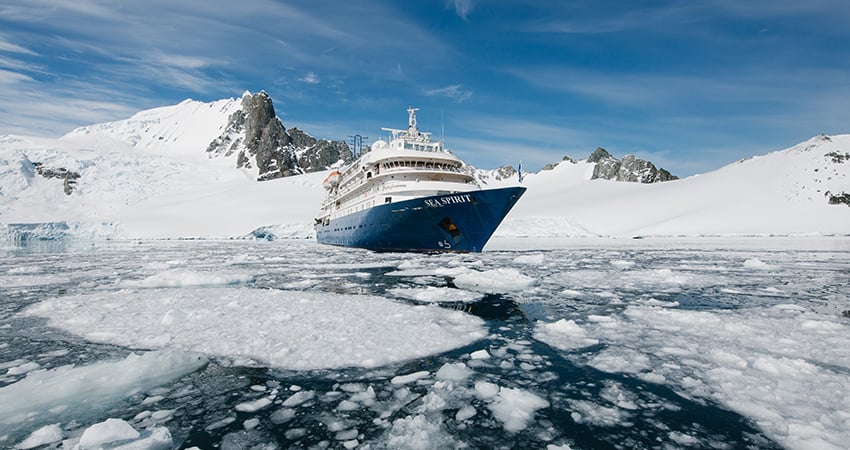
Getting “into the ice” is of another magnitude entirely on Poseidon’s summertime voyages to the geographic North Pole. Aboard the nuclear-powered icebreaker 50 Years of Victory, guests experience the exhilaration of breaking through multiyear sea ice in a manner unlike any other vessel, including the highest rated expedition ships. With 75,000 horsepower at its disposal, the 128-passenger vessel can crack ice up to nine meters in thickness, sliding on top, crushing it and pushing it aside. This is part of the fun of this ultimate adventure to the “Top of the World,” 90º north latitude.
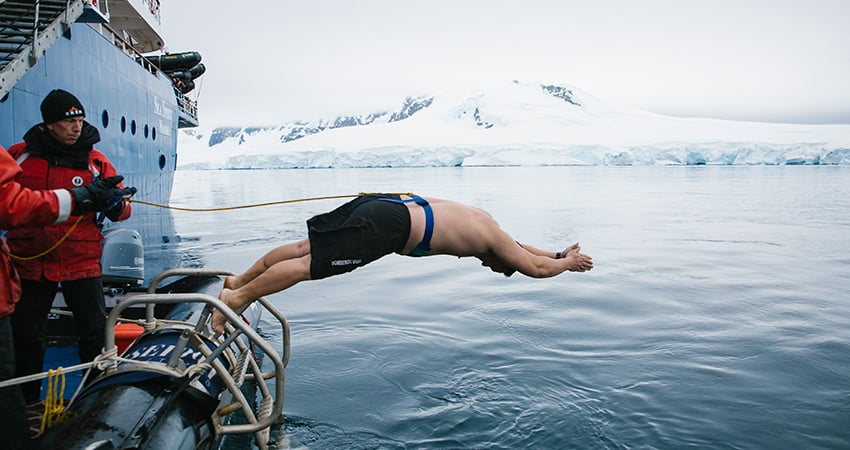
On all of our adventures, guests can personally get “into the ice” in another way, too. Our famed “polar plunge” is open to all comers, whether it takes place in Whaler’s Bay on Deception Island in the South Shetlands, in East Greenland or even the North Pole!